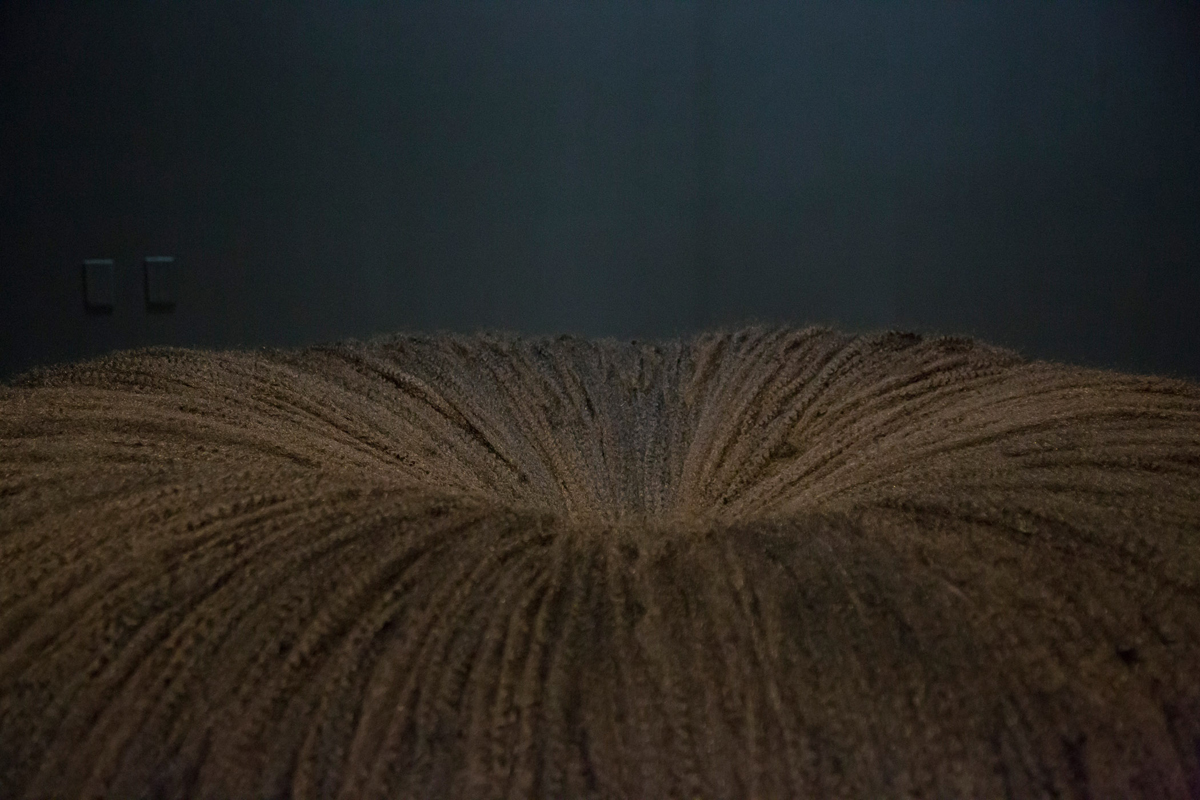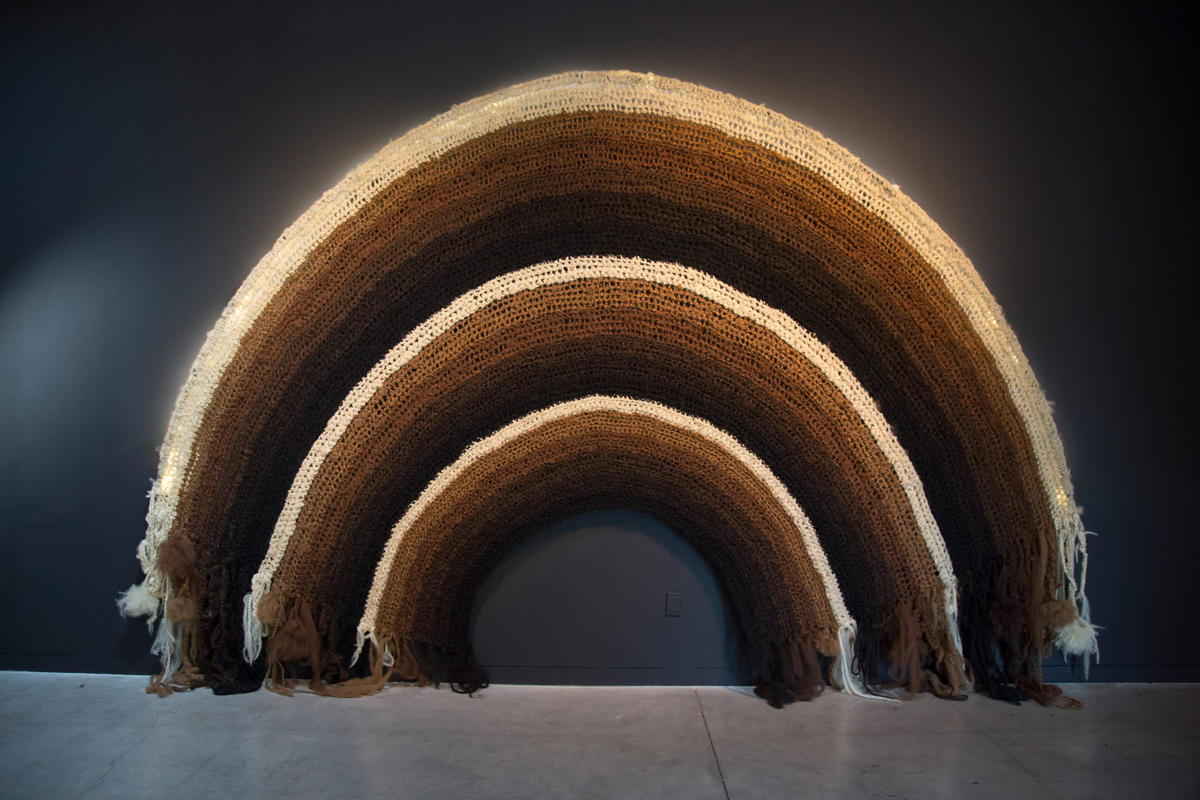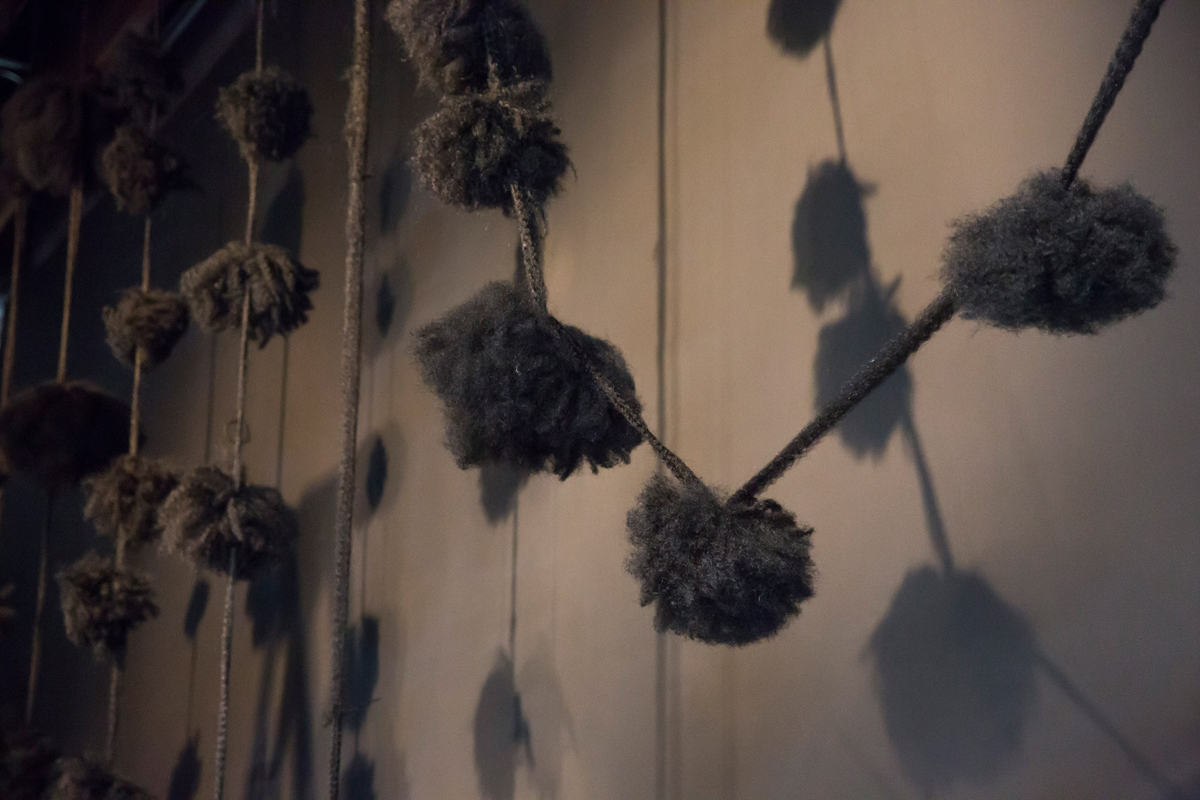To be a black woman is, by default, to lead a textured existence. Just as we learn to reconcile with the hair growing out of our heads — its politicization, its policing, the frequent uninvited grubby hands that attack it, the dreaded single-strand knots — we must constantly mediate between our “racialized identity, visibility, and materiality,” as outlined in the publication for When and where I enter, Angela Hennessy’s solo exhibition at Southern Exposure.
Still, there’s the black woman’s femininity, her sensuality. Hennessy’s mammoth — might I add, woolly — sculptural works tackle black women’s fraught history through the use of both synthetic and human hair, gathered locally from beauty supply stores and wig shops in her West Oakland neighborhood.
The first piece that Hennessy completed for the exhibition is Mourning Wreath, which also happens to be the first sculpture visitors encounter once they enter the building. The wreath is made of synthetic hair, human hair, found hair, the artist’s hair, gold leaf on copper, enamel paint, chain, a wire frame, and a cement base. Hennessy says the piece is “primarily a response to cross-cultural rituals of offering hair as a sign of respect and grief for the dead.” This piece, along with the others in the show, references Victorian and African hair weaving traditions.

“Hair,” Hennessy explains, “has long served as a material exchanged between the living and the dead. As a symbol of one’s identity, it is a potent tactile reminder of the separation caused by death. For black people specifically, hair is tangled with politics of race and hierarchies of power.”
Hennessy’s installations reclaim hair weaving traditions and mourning rituals with a panoply of fibers and compositions that sit, stand, and hang, stately in the space they take up. And this death motif isn’t a first for Hennessy — in fact, it’s the thematic thread that runs along the vast majority of her work. As an associate professor at CCA, she lectures and leads workshops on the decolonization of death and grief.
The title of the exhibition comes from an Anna Julia Cooper essay in her 1892 collection, A Voice from the South. The black feminist scholar writes:
Only the black woman can say when and where I enter, in the quiet, undisputed dignity of my womanhood, without violence and without suing or special patronage, then and there the whole Negro race enters with me.

In the late 19th and early 20th centuries, Cooper was a proponent of intersectional feminism long before the phrase entered the mainstream. She insisted that black women deserved to take up real space.
That same line of thinking is palpable in Hennessy’s works, which in their grand stature, require Southern Exposure’s visitors to maneuver around them with care and foresight.
Just six months ago, Hennessy considered giving up her studio and letting go of “making objects and things that took up physical space.” But when the opportunity to work with Southern Exposure arrived, she thought “if the pieces could stand in as bodies then they would also implicate the bodies of those who entered into the space and perhaps complicate the dynamic of subject/object.” The scale of her works guarantees those who interact with them feel imposed upon and stirred.

In Unidentified Grieving Objects, Hennessy reconfigures a description associated with extraterrestrials, suggesting a closer look at the very authentic anonymous ubiquity of grieving in the black community. The title, Hennessy notes, “refers to a pervasive but sometimes vague feeling of grief in the air that often ornaments blackness. It’s become so familiar that it has a decorative effect — hence the pom pom party aesthetic.”
Hennessy reminds me that black people — whether it’s at the hands of tactless popular culture or workplace microaggressions — become melancholic baubles. Their beauty is oft appropriated, but their pain is always misunderstood. Though that’s not all Unidentified Grieving Objects means to Hennessy. “Suspending black things from wooden beams,” she says, “is also to call upon a certain history of violence.” And it’s that very history of violence and persecution that makes a show like this — one that is so expansive — a beautiful requiem.

‘When and where I enter’ is on view at Southern Exposure in San Francisco through Dec. 2, 2017. For more information, click here.